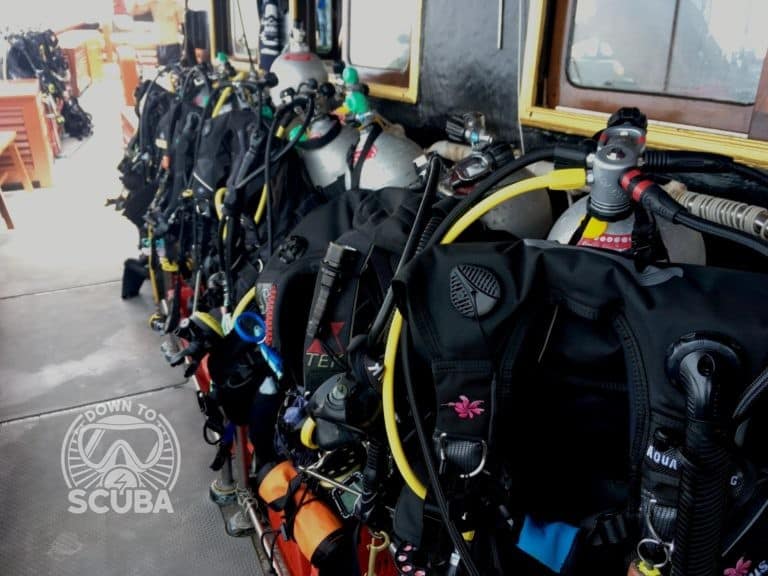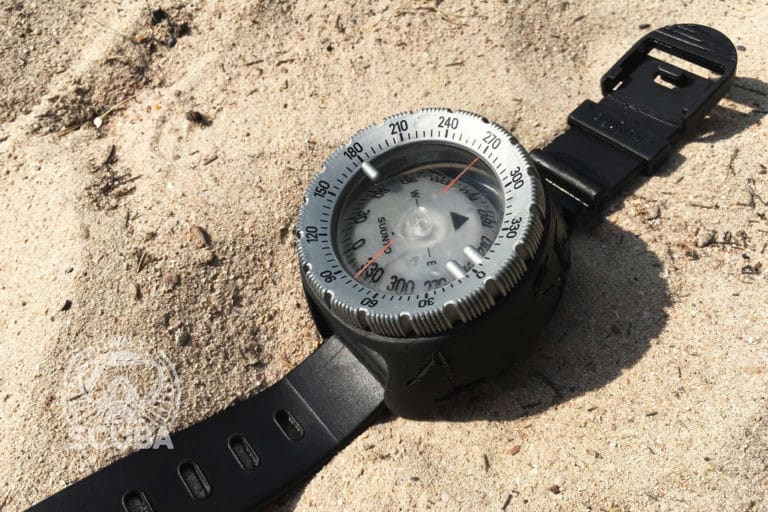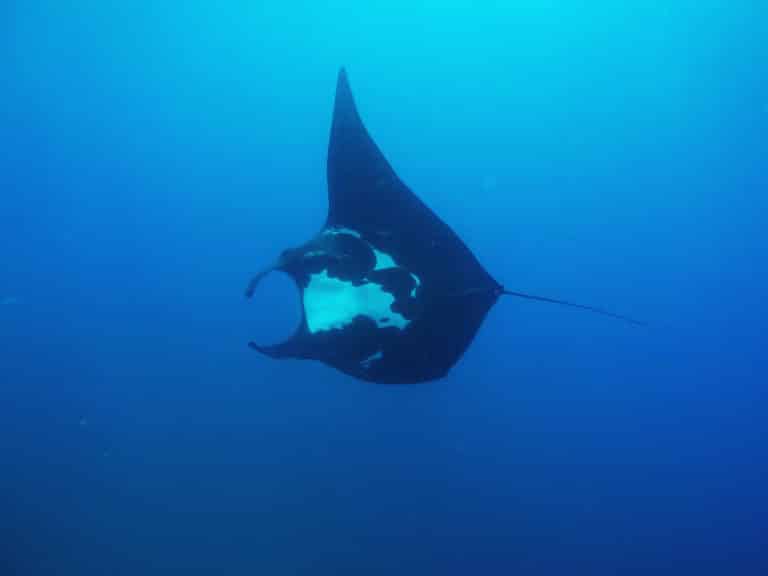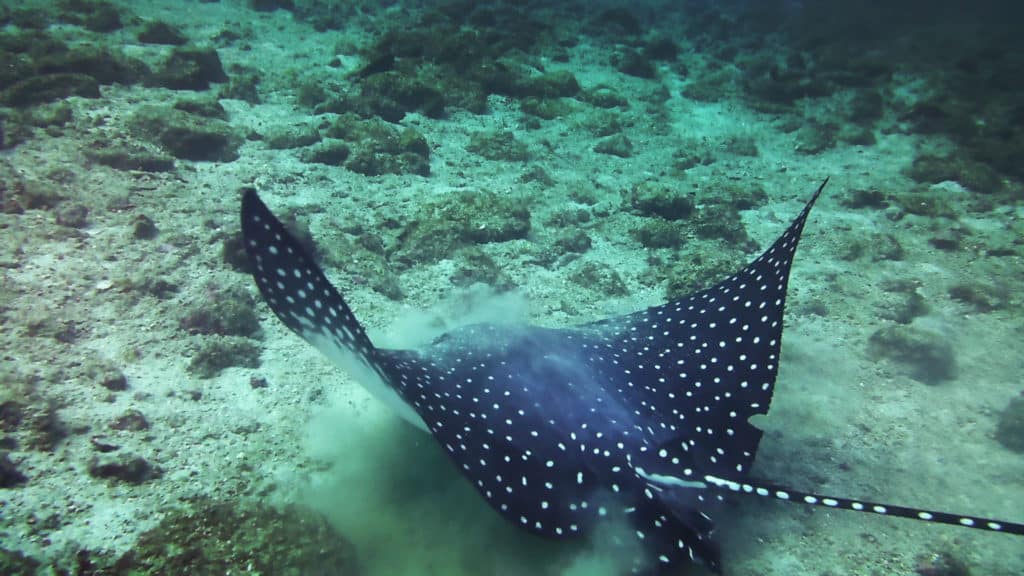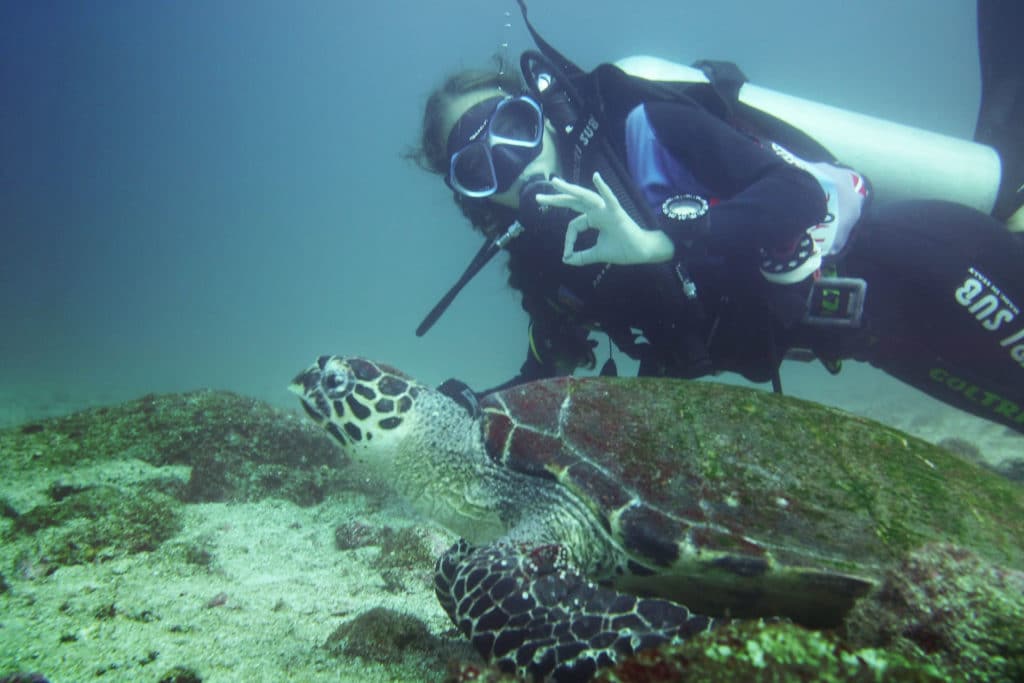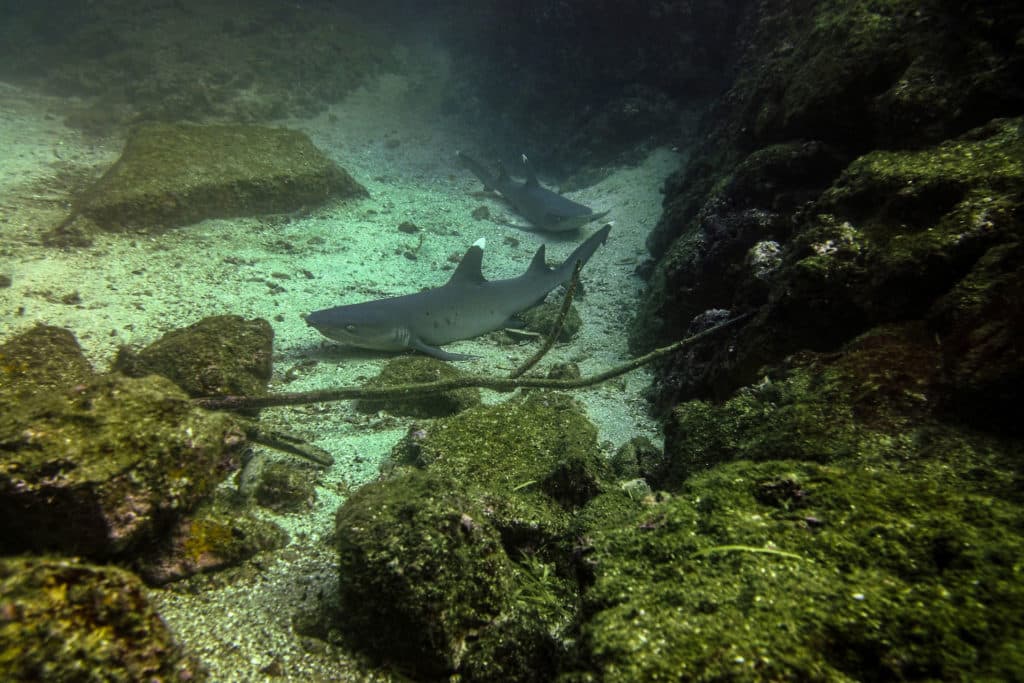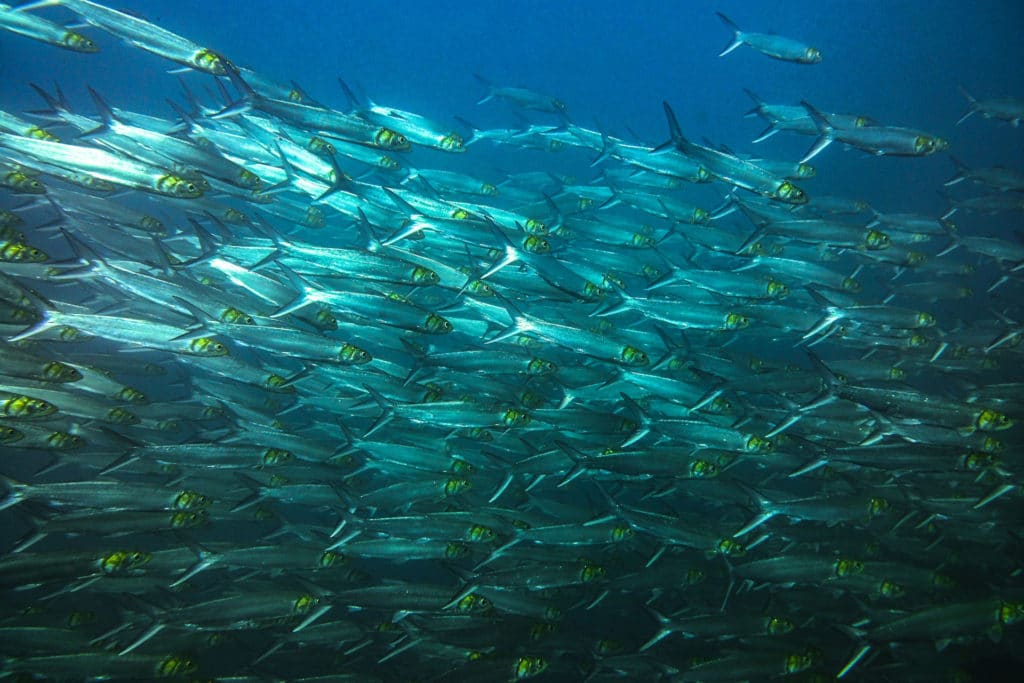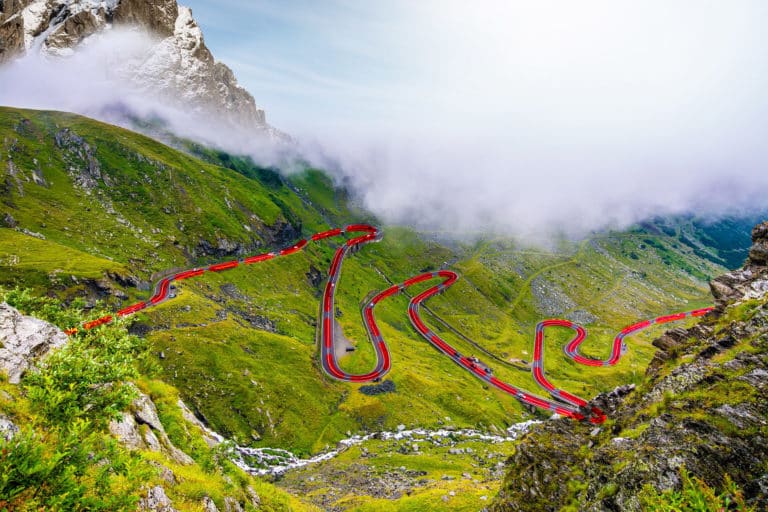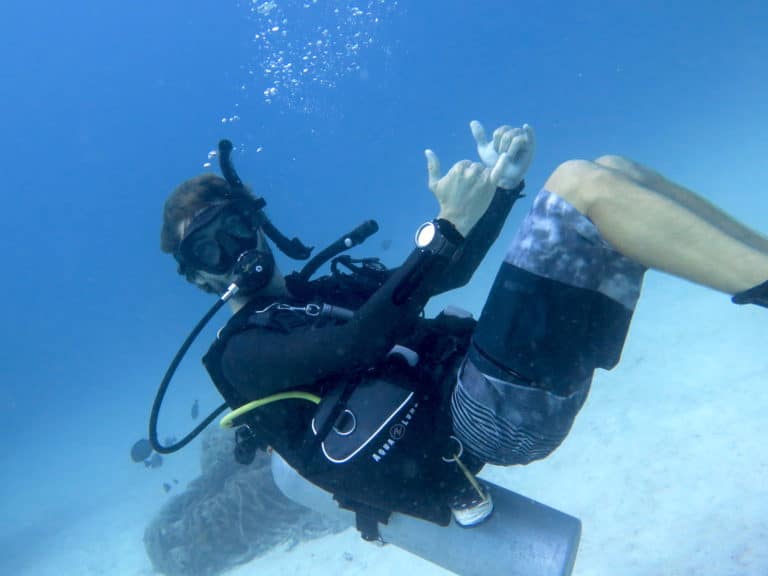Are you getting into scuba diving and not sure what is needed to scuba dive? Or maybe you are ready to purchase your own equipment and need a comprehensive checklist. Well, here is our scuba diving equipment list and the uses for each item!
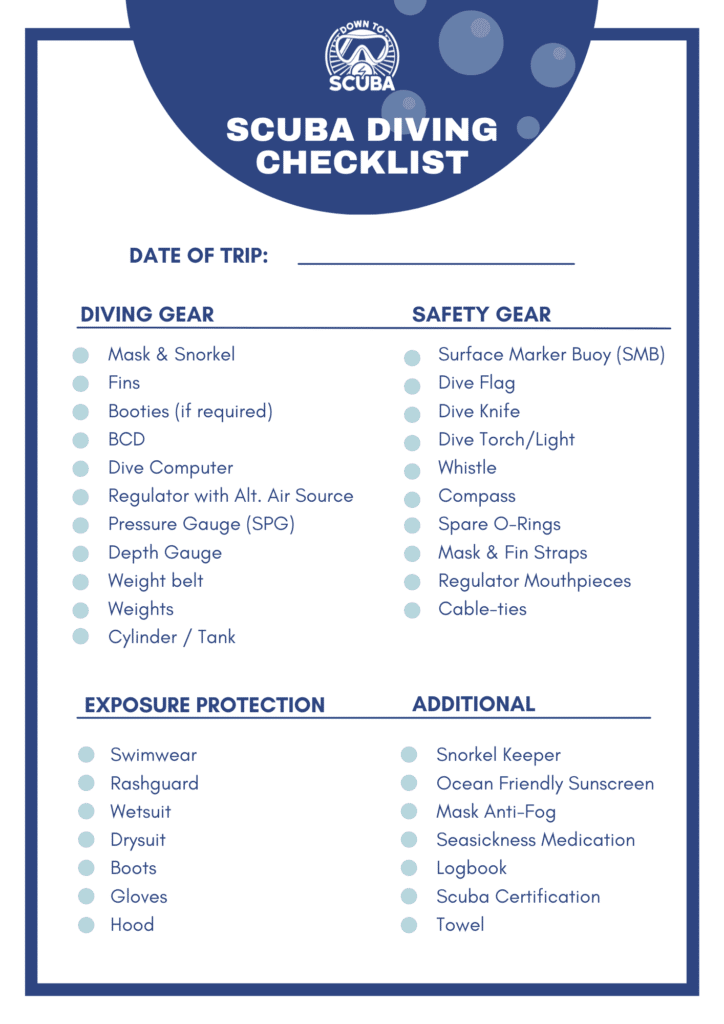
Table of contents
Scuba Diving Equipment List and Description
Mask & Snorkel
You can open your eyes underwater but your vision will be blurry so this is why you will need a diving mask. The diving mask should have tempered glass. A snorkel is used on the surface for long surface swims to conserve air, or if the surface is choppy.
Regulator
A regulator will consist of 4 main hoses.
1. A Primary Air Source that the diver will breathe from.
2. A Secondary Air Source (also known as an Alternate, or an Octopus) for your buddy if they run out of air.
3. A Submersible Pressure Gauge (SPG) so you know how much air is in your tank.
4. A Low-Pressure Inflator (LPI) that will connect your tank to your BCD so you can inflate the jacket.
Air Tank/Cylinder
Air tanks can come in various sizes. This will hold your air or the gas you will breathe fr
BCD
A Buoyancy Control Device or Buoyancy Compensator is an inflatable bladder that the dive will wear. It is typically a jacket or a wing-style. The bladder controls a diver’s buoyancy, and helps you go up and down underwater, and will keep you buoyant for safety while on the surface.
Fins
Fins (not flippers!) are worn on your feet to help you move more efficiently underwater. They extend your leg so you get more power when you kick your legs. There are many styles and designs of fins. You can also choose from open or closed-heeled fins, and wear fins with or without dive boots.
Weights / Weight-belt
Weights will help you descend in the water. They can be worn on a weight-belt, or as integrated weights in your BCD pockets. The number of weights will depend on several factors, and you should be properly weighted to make scuba diving more comfortable.
Dive Computer
A dive computer will tell you important information that you need while scuba diving. At a minimum, it will give you the depth, the time elapsed during your dive, and your No-Decompression Limit (NDL). Take a look at the difference between a dive watch and other features of a dive computer.
Looking for the smallest dive computer for everyday use? Check out my comparison guide!

Exposure Protection
There are several types of exposure protection that you can wear as a scuba diver. Drysuits are used in cold water diving. Wetsuits come in various thicknesses depending on the water temperatures, and rash-guards are comfortable for warm water diving.
Hood, Gloves, Booties
These items are additional exposure protection that may be used in cold water diving, or in more extreme diving conditions such as in caves or wrecks.
Dive Compass
A compass will tell you the direction of magnetic North. This is important when learning how to navigate a new dive site, and how to return back to a dive boat. Navigating with a compass underwater is a great skill for any diver; beginner or experienced.
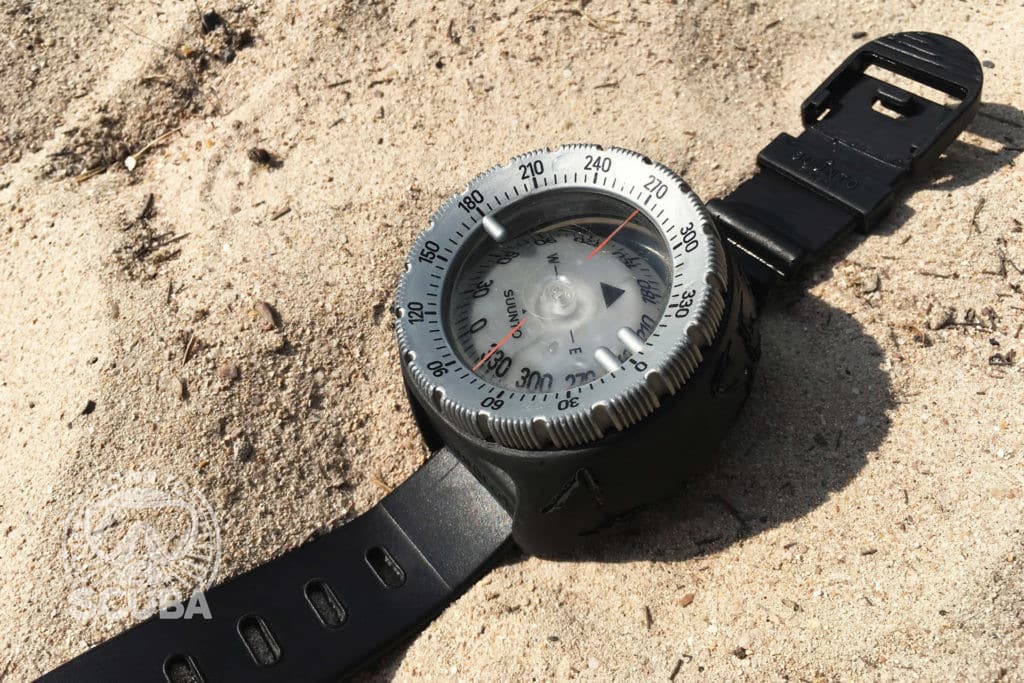
Dive Light Torch
A dive torch will brighten things up underwater. The light allows colors to pop out as we lose color quickly in the water. It is also made specifically for underwater use. Firstly, it is waterproof Secondly, it is very strong which causes it to heat up. This is why you should only use dive torches/lights underwater, and not on-land as they may overheat
Dive Knife / Cutting Tool
A dive knife or cutting tool is a standard piece of equipment for divers. This is placed in a pocket, or somewhere that is easily accessible by both hands (sometimes it it strapped onto your leg). It is especially useful for removing fishnets or lines that may cause entanglement to the diver.
Surface Marker Buoy or Dive Flag
This is a visible marker that floats on the surface while a diver is under the water. A delayed surface marker buoy (dSMB) is inflated and deployed near the end of the dive, during a safety stop before the diver comes up from the dive. While a dive flag will remain on the surface during the whole dive. Buoys and flags warn boat traffic and people above that there is a diver below and to exercise caution when moving on the surface.
Whistle / Noise-Maker
Another safety piece of any scuba diving kit is some sort of noise-maker, such as a whistle or a shaker. This is used to alert boats on the surface, or other people underwater, in the event of an emergency or a separation. Losing a dive on the surface is rare, but it can happen.
Scuba Diving Equipment Prices
Scuba diving equipment is not cheap, and it shouldn’t be. These specialized equipment has been tried and tested under extreme pressure and heavy use. This means it is safe for us to scuba dive with and we can rely on it. Scuba diving equipment prices will range however.
This will be due to brand names, how extreme the conditions will be where you will be using it (tropical vs. cold water diving), additional features of the item, whether it is colorful or has patterns, if it is light-weight and the material it is made from, what pressure it is to be used for, and more.
Be prepared to pay hundreds of dollars for high-quality scuba diving equipment. However, there is always second-hand dive equipment available. Just make sure you get everything checked and serviced by a certified technician before spending the money!
All You Need for Scuba Diving
So there you have it, a scuba diving equipment list and its uses for anyone who is planning on going scuba diving. Most dive centres will have all of this equipment for rental use, or if you plan on purchasing your own kit, use this list as a reference. Enjoy!
